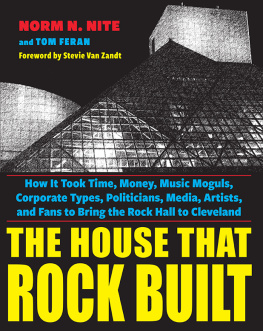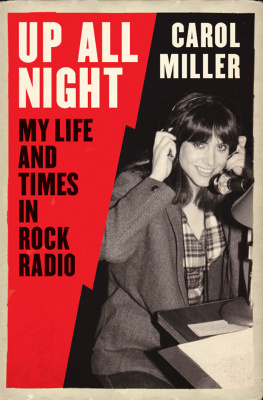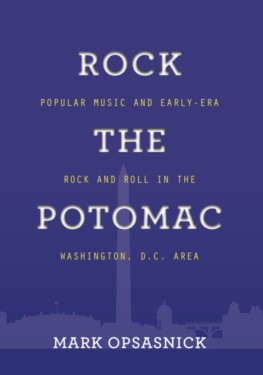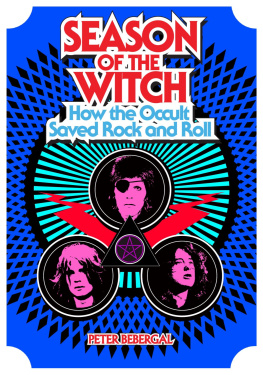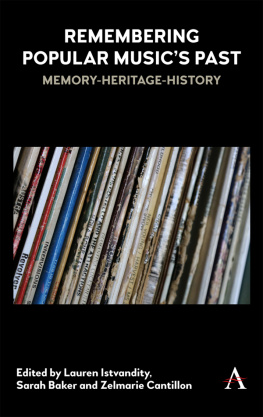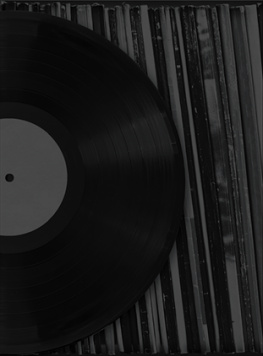POPULAR MUSIC, POPULAR MYTH AND CULTURAL HERITAGE IN CLEVELAND
EMERALD STUDIES IN POPULAR MUSIC AND PLACE
Series Editors:
Brett Lashua, Leeds Beckett University, UK
Stephen Wagg, Leeds Beckett University, UK
Studies of the relations between popular music and place offer rich conceptual and empirical terrain. This interdisciplinary book series publishes research on popular music and its geo-spatial relations by scholars working in the wider disciplines and subject fields of popular music studies, cultural geography, cultural studies, sociology, urban studies, youth studies, leisure studies, and beyond.
Titles in the series focus not only on specific cities, but also rural and suburban places, alternative or marginal spaces, online spaces, and other music geographies, for example, histories of vanished or erased places, music tourist attractions, thanatological spaces (e.g., cemeteries and other memorializations for deceased musicians), music museums, and so on. The series promotes work by scholars interested in popular music, place and space, cultural identities, globalization, history, and cultural heritage. In turn, the book series offers a critical space for scholars to theorize about the changing place of popular music where it is encountered, enjoyed, and contested.
If you are interested in publishing in this series please contact the series editors at
POPULAR MUSIC, POPULAR MYTH AND CULTURAL HERITAGE IN CLEVELAND: THE MOONDOG, THE BUZZARD, AND THE BATTLE FOR THE ROCK AND ROLL HALL OF FAME
BRETT LASHUA
Leeds Beckett University, UK
United Kingdom North America Japan India Malaysia China
Emerald Publishing Limited
Howard House, Wagon Lane, Bingley BD16 1WA, UK
First edition 2019
Copyright Brett Lashua. Published under exclusive licence by Emerald Publishing Limited.
Reprints and permissions service
Contact:
No part of this book may be reproduced, stored in a retrieval system, transmitted in any form or by any means electronic, mechanical, photocopying, recording or otherwise without either the prior written permission of the publisher or a licence permitting restricted copying issued in the UK by The Copyright Licensing Agency and in the USA by The Copyright Clearance Center. Any opinions expressed in the chapters are those of the authors. Whilst Emerald makes every effort to ensure the quality and accuracy of its content, Emerald makes no representation implied or otherwise, as to the chapters suitability and application and disclaims any warranties, express or implied, to their use.
British Library Cataloguing in Publication Data
A catalogue record for this book is available from the British Library
ISBN: 978-1-78769-156-8 (Print)
ISBN: 978-1-78769-155-1 (Online)
ISBN: 978-1-78769-157-5 (Epub)
Contents
About the Author |
Acknowledgments |
About the Author
Brett Lashua is Reader in Leisure and Culture at Leeds Beckett University. He previously held academic posts at the University of Liverpools Institute for Popular Music and with Cardiff Universitys School of Social Sciences. He earned his PhD from the University of Alberta, where he collaboratively designed and delivered Edmontons The Beat of Boyle Street community youth music program. He received his undergraduate degree in History and a Masters degree in Youth Recreation, both from Kent State University. Before his academic career, Brett was a drummer with a number of bands performing in the northeast Ohio area.
Acknowledgments
The primary research for this book was supported by a fellowship through Case Western Reserve Universitys Center for Popular Music Studies (CPMS) and the Rock and Roll Hall of Fame Library and Archives. I am grateful to Professor Daniel Goldmark at CPMS and the brilliant archivists at the Rock Hall: Jennie Thomas, Andy Leach, Jona Whipple, Anastacia Karel, Sule Holder, Shannon Erb, and William Jackson.
Particular thanks must go to the musicians that I have had the privilege to work with across the years. These are too many to name, but first and foremost will always be my rock n roll brother, Derek Lashua. Special thanks go to Greg Golya, Joe Minadeo, Mandy Lascko, Jack Randall, Brian Jaykell, Krista Tortora, Alison Scola, Matt Fry, Jeff Hair, the amazing Sterle brothers, Shawn Hackel, Ian Shipley, Tim Dralle, Bill McConnell, Robert Mason, Jeff Miller, Dan The Moon Page, Dejay Hayn, Yaw Owusu, Kofi Owusu, Phil Smith, and CJ and Mike Szuter. There was also the band that should have been: Jen Golya, Cheryl Zivich, and Andi Mendise thanks for being wonderful friends.
I am also indebted to a number of stellar academic colleagues, especially Karen Fox, Karl Spracklen, Stephen Wagg, Simon Baker, Paul Thompson, Sara Cohen, John Schofield, Mary Parr, Erin Sharpe, Tom Hall, and Amanda Coffey. Thanks for your enriching contributions to my academic life and beyond. Appreciation is also due to Breda University of Applied Sciences, the Netherlands, where I held a Visiting Scholars position with the Academy for Leisure in the autumn of 2018; this allowed much appreciated time and space to finish writing this book.
Philippa Grand at Emerald Publishing was kind enough to meet, discuss, and support the idea of this book thank you.
Last and most important, everything to Debra and Alice: the best band I have ever been in.
Acknowledgment of Sources
Some of the content within the chapters that follow, mainly in related to Cleveland during the early 1950s, was developed into a chapter Cleveland: Where rock began to roll? I wrote for a collection I co-edited with Stephen Wagg, Karl Spracklen, and M. Selim Yavuz, Sounds and the City: Volume 2, published by Palgrave Macmillan (2019). Reproduced with permission of The Licensor through Copyright Clearance Centre, RightsLink.
on popular music heritage, was developed into a chapter Popular Music Heritage and Tourism I contributed to The Routledge Companion to Popular Music History and Heritage (2018), edited by Sarah Baker, Catherine Strong, Lauren Istvandity, and Zelmarie Cantillon. Reproduced with permission of The Licensor through PLSclear.
Introduction: Hello Cleveland?
On May 6, 1986, in what may have felt like the first time in a long time, Cleveland was being celebrated as a winner. After months of public campaigning and civic promotion, Cleveland had been selected, with much fanfare and not a little controversy, as the site for the Rock and Roll Hall of Fame and Museum. The decision, as ran one front-page headline from Clevelands biggest newspaper, The Plain Dealer, is music to the citys ears (DeWitt, 1986, p. 1-A). Its official! Cleveland gets rock hall exclaimed The Columbus Dispatch (1986, n.p.), echoing a chorus of headlines from across the United States: the Oakland Tribune announced Its claim to the Hall of Fame proves Cleveland was built on rock n roll and Cleveland is where the heart of rock and roll beats officially (Landsberg, 1986, n.p.). Since opening nearly a decade later in 1995, it has hosted millions of visitors from around the world (Santelli, 1997). Yet many remain surprised to learn that the Rock Hall is located in Cleveland, Ohio: Why Cleveland? asked Adams (2002). Why is the Rock Hall there, rather than in another city? From outside of Northeastern Ohio, Cleveland seems an unlikely and surprising site for the Rock and Roll Hall of Fame (Sheerin, 2012). What is the citys musical claim-to-fame? For years the city was disparaged, the punch line to nearly every joke about Americas failing urban centers. How did Cleveland end up, then, being selected as the site of a major popular music museum? Is Cleveland truly where rock began to roll, as one radio station, WMMS 100.7 FM The Buzzard once put it?


